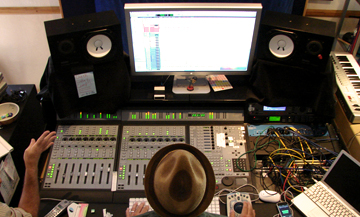Electronic Music Production Institute in Chandigarh
The magic of computer draws up unmatched possibilities of recorded sound, but if you do not have the necessary skills to use it using the latest tools, it is more or less a futile exercise. The Electronic Music Production Course In Chandigarh is well rounded course that covers all the major aspects of modern day music production. We at Backstreet Music Academy pride ourselves for offering the best Electronic Music Production Course In Chandigarh enabling students to start with an idea and develop that idea into a full fledged composition.Luckily, your knowledge to electronic music production and sound design, such as setting up your home Studio with software and hardware integration, MIDI sequencing, mixing is now accessible. It doesn’t matter if you have experience in performing electronic music or you are an absolute rookie looking to fill in gaps in your skills, this schedule assists you in your requirement to raise your level in music production.

